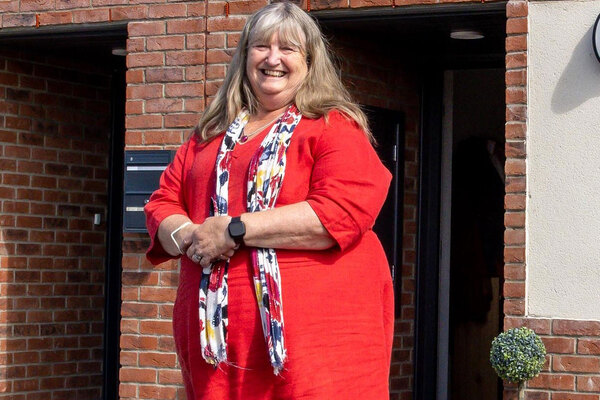You are viewing 1 of your 1 free articles
Housing White Paper: what should it include?
Yorkshire Building Society’s chief economist Andrew McPhillips gives his view on what the White Paper should include
The lack of supply in the housing market has been long-established, with the UK racking up a housing deficit of around 1.2 million properties since the Barker Review in 2004.
Recent comments from Sajid Javid and Gavin Barwell would suggest that the upcoming Housing White Paper is the means through which the government plans to introduce a much-needed housebuilding revolution.
However, the question remains as to whether or not the measures included in the paper will be substantial enough to close the gap between what Dame Kate Barker’s review told the then-government we needed, compared with what has been built.
“The proposals should focus on stimulating growth in the supply of properties.”
In recent years, housing policy has largely focused on supporting homeownership at the expense of other tenures, and even then predominantly demand-side incentives, such as Help to Buy. These measures are positive in the sense that they help to ease affordability pressures in the short term, however they ultimately drive up prices in the long term by pushing up demand in a supply constrained market.
The proposals included in the White Paper should therefore focus on stimulating growth in the supply of properties. This would deliver on Mr Barwell’s shift in emphasis since he was appointed housing minister to support building homes, whatever the tenure, where they are needed.
And they must include enough flexibility to fit the different housing markets seen around the country.
A LOOK AHEAD TO THE HOUSING WHITE PAPER

10 tests for the Housing White Paper
The causes for the problems faced vary by region, county and even city or town and the White Paper must allow for local conditions to be taken into account.
In recent weeks, we have held round tables to talk to academics and local leaders about the housing sector, including from local authorities and housing associations.
At each of them we have heard about what needs to be in the White Paper to address the local challenges they face.
We heard in York about the potential benefits of direct commissioning and work in Newcastle has proved how more intervention in local markets can help encourage supply.
In Oxford, the success being seen in securing local co-operation across councils has delivered real progress. Looking forward, there are opportunities for more innovative ways to fund the infrastructure needed for homes and scope for housing co-operatives to get building going.
What are the keys to success?
There are a wide range of things the government could do to boost housebuilding, but the following measures are things that I would like to be included in the White Paper.
1. Boost development across all tenures
The UK not only needs more homes for sale, but more homes for rent, particularly at levels below market rent. There is a significant lack of social housing, and the Chartered Institute of Housing predicts that 370,000 council and housing association homes could be lost in England by 2020.
It is crucial that the government focuses on enabling the building of homes of a range of different tenures in order to suit people’s differing housing needs.
2. Devolve housing investment to local authorities
Both the number of homes and the type of properties required varies by city region and locality. In order to effectively tackle the housing crisis, it is crucial that the solutions are determined at a local level by those who better understand the problem in their area.
The White Paper should include the toolkit needed to tackle problems – rather than a centrally imposed set of solutions.
3. Enable councils to borrow against their assets to fund housebuilding
Giving councils greater fiscal freedoms by enabling them to borrow against assets to raise capital will help them to invest in housing. The construction of homes should not rely solely on the sale of land, as it delays investment and, by extension, housebuilding.
These suggested changes are by no means exhaustive, but are some considerations which would hopefully go some way towards tackling the housing crisis.
Some of the measures which are rumoured to be featured in the Housing White Paper, such as releasing brownfield land for construction and introducing measures to help SME builders to construct more homes, sound like positive steps forward.
Whether the full White Paper will be extensive enough to tackle the housing crisis remains to be seen, but these rumoured policies are hopefully a sign of what could be a substantive and well-thought-out strategy.
Andrew McPhillips, chief economist, Yorkshire Building Society








